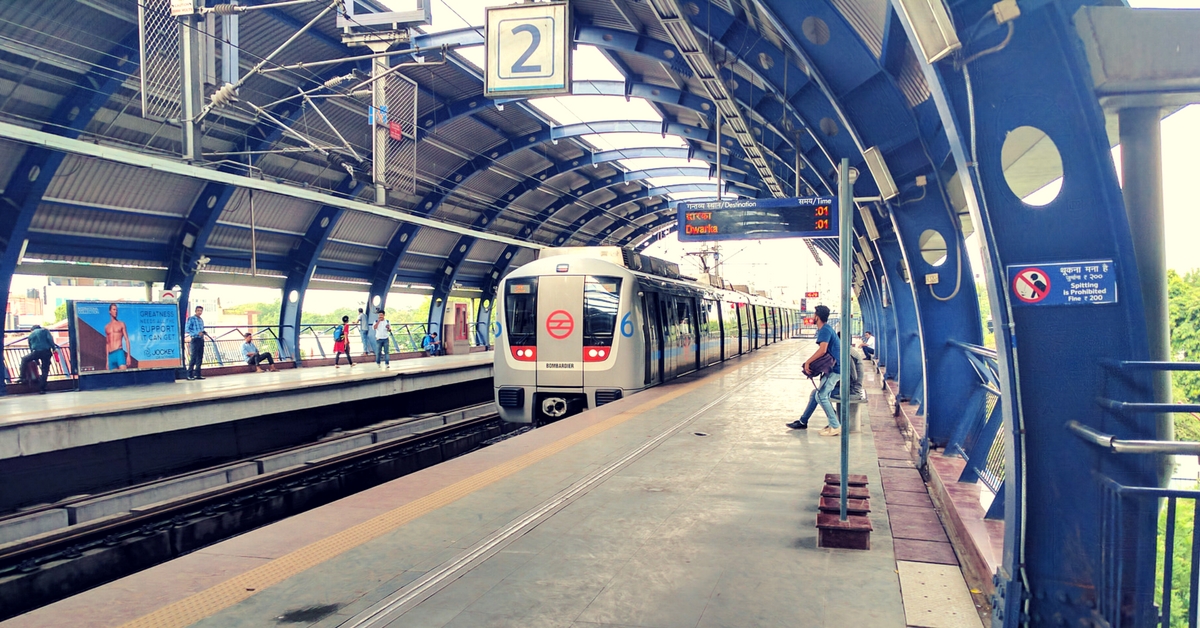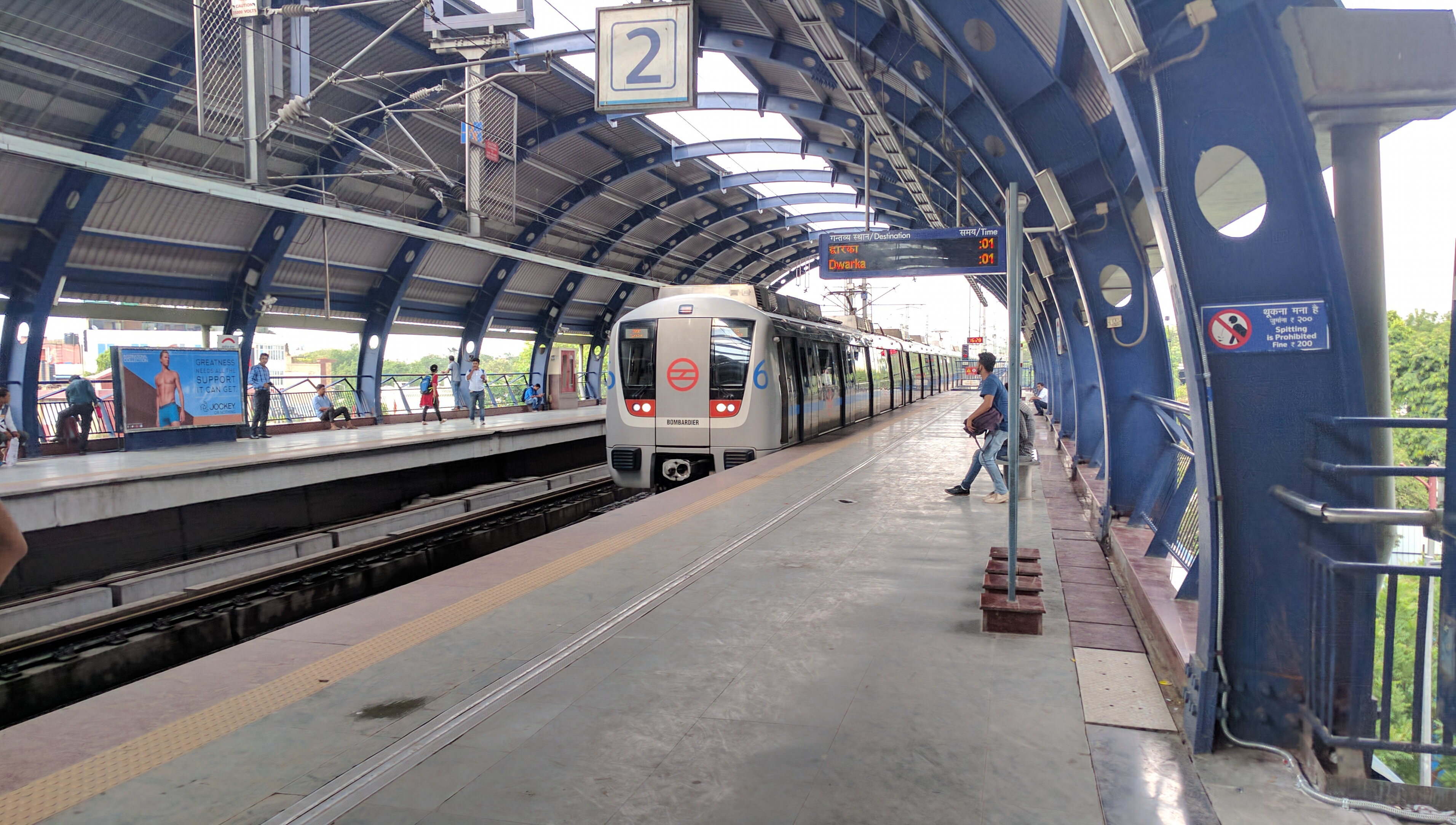Delhi Metro’s New Solar Sound Barriers Will Not Only Cut Noise but Also Generate Electricity!
This is the first time a metro rail network in India will use such installations, which are common in the European countries.

Taking another step in its bid to embrace alternative energy, the Delhi Metro is going to install solar sound barriers on its elevated corridors that would generate electricity!
As a pilot project, the Delhi Metro Rail Corporation (DMRC) will be installing these solar sound barriers that reduce noise considerably on the viaduct between its upcoming Okhla Vihar and Jasola Vihar metro stations under the Magenta Line of Phase-III.
These barriers installed on either side of the stretch would be able to generate as much as 1 MWp (mega watt peak) of solar energy.

Image for representation only. Source: By Ashwin Kumar, via Wikimedia Commons
This is the first time a metro rail network in India is using such installations, which are common in the European countries like Austria, Switzerland, Germany, France and Italy. Solar sound barriers like these are also put up along highways as well as railway tracks.
“The plan is to install bifacial photovoltaic (PV) solar panels which could also act as noise barriers on the elevated corridor like there are on parts of the airport metro and Gurgaon’s Rapid metro. Bifacial solar systems are installed vertically and the PV panels are there on both sides,” a metro official told The Hindustan Times.
Also read: Whimsical Motifs by Italian Artist Lift the Spirits of Delhi Metro Commuters
The report also cites the tender that was floated to invite bidders for the project, saying, “The generated solar power is to be utilised for captive application of Delhi metro and the surplus power will be fed to the DMRC grid. The scheme aims to reduce the fossil fuel-based electricity load on main grid and make the system self-sustainable from the point of electricity.”
The reason for choosing the particular stretch to install the noise barrier is that it is a congested area with a lot of residential colonies, where such kind of noise reduction will prove to be a boon.
The DMRC is also targeting to increase its solar generation to 20 MW by the end of 2018 and 50 MW by 2021.
Like this story? Or have something to share? Write to us: [email protected], or connect with us on Facebook and Twitter.
NEW: Click here to get positive news on WhatsApp!
If you found our stories insightful, informative, or even just enjoyable, we invite you to consider making a voluntary payment to support the work we do at The Better India. Your contribution helps us continue producing quality content that educates, inspires, and drives positive change.
Choose one of the payment options below for your contribution-
By paying for the stories you value, you directly contribute to sustaining our efforts focused on making a difference in the world. Together, let’s ensure that impactful stories continue to be told and shared, enriching lives and communities alike.
Thank you for your support. Here are some frequently asked questions you might find helpful to know why you are contributing?


This story made me
- 97
- 121
- 89
- 167











